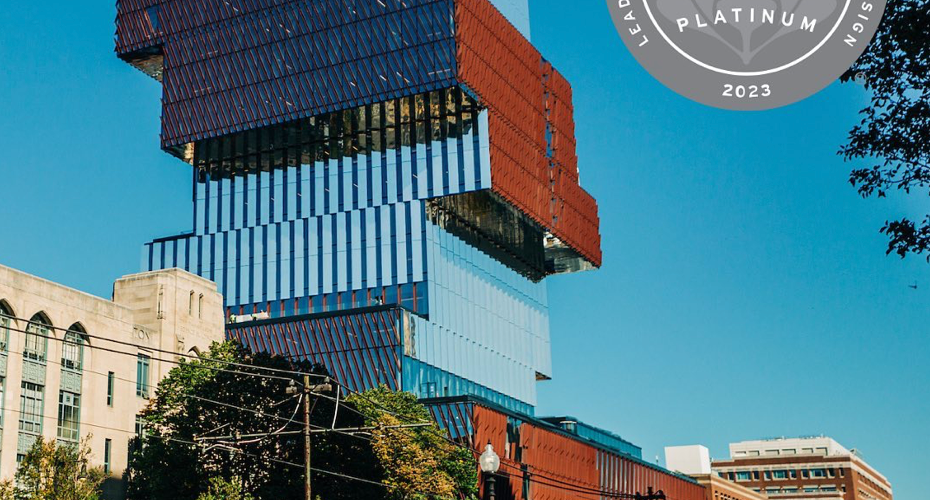Boston’s largest fossil fuel-free building to date, receives LEED© Platinum
June 20, 2023 (originally published by BU Sustainability) – Boston University’s Center for Computing & Data Sciences, Boston’s largest fossil fuel-free building to date, received LEED© Platinum, the highest rating from the U.S. Green Building Council.
“Receiving LEED Platinum for the Center for Computing & Data Sciences is the culmination of a decade of work bringing BU’s newest academic building to life,” said Dennis Carlberg, Boston University’s Associate Vice President for Sustainability. “In 2017, when the Board of Trustees approved the Climate Action Plan, it changed the ambition for this project. When the design team was reassembled in 2018, senior leadership asked for a fossil fuel-free building and to set a goal to achieve LEED Platinum. They were looking for a strong statement in what sustainable design can look like in Boston and demonstrate that fossil fuel-free buildings are possible at scale in a dense urban environment.”
LEED, or Leadership in Energy & Environmental Design, is a globally recognized symbol of excellence in green building design and construction. Highlights of the Center’s sustainability features include:
- The geothermal heating and cooling system is one of the largest of its kind, with 31 closed-loop heat pumps going 1,500 feet beneath the earth’s surface – twice as deep as the John Hancock Tower is tall.
- There are no gas lines connected to the building.
- Electricity matched from BU Wind and BU Solar provides the building’s total electricity demand. Utilizing renewables for electricity and no fossil fuel use makes the building carbon-free.
- Exterior louvers and reflective vertical sawtooth elements provide shade to keep the Sun’s heat out during the summer. Triple-glazed windows keep the heat in the building during the winter and out of the building during the summer.
- Energy recovery devices, like the heat recovery wheels used in this building, transfer outgoing thermal energy to the incoming outdoor air without mixing the actual air. These “dedicated outdoor air systems” also dehumidify the moisture content of outside air, thus making the distributed air more comfortable.
- Eight green roofs provide outdoor space for building occupants to spend time outside, capture rainwater, and help reduce the urban heat island effect.
- Concrete mixes were modified, and cure times were extended to reduce cement content, which resulted in a 6% reduction in embodied carbon.
With the addition of the Center for Computing & Data Sciences to the University’s LEED portfolio, BU now has 23 LEED-certified buildings and spaces on campus totaling 1.8 million square feet. To learn more about the sustainability elements of this building, you can view BU Sustainability’s interactive virtual tour.
###
